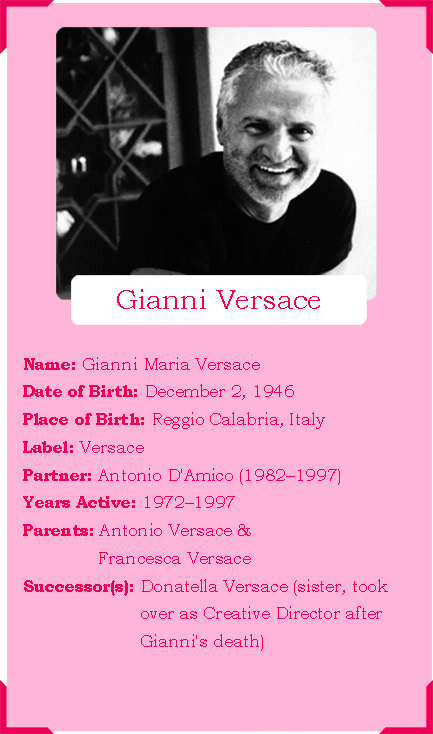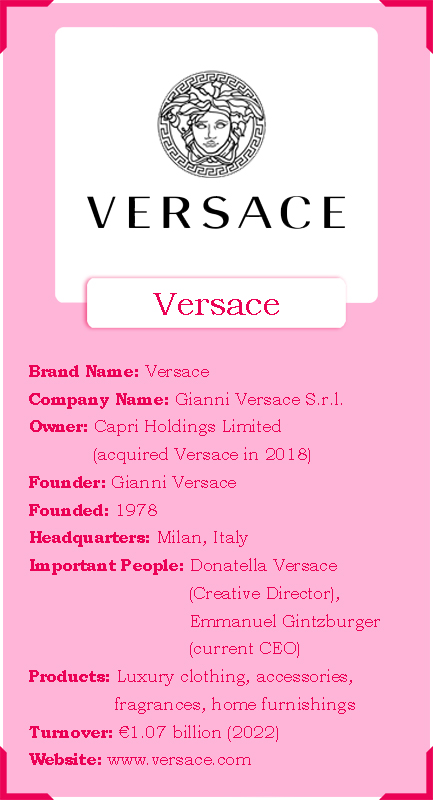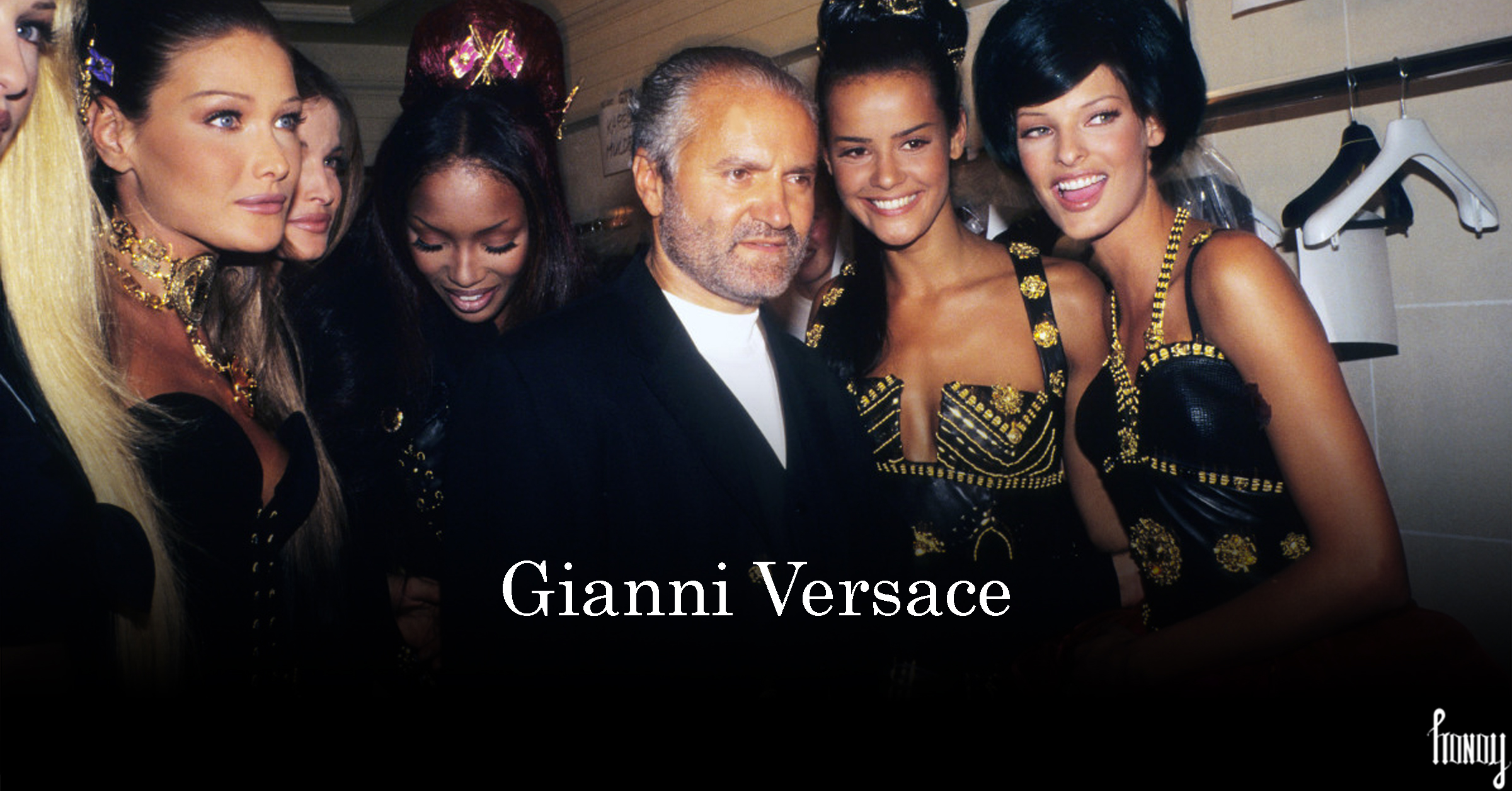Introduction to Gianni Versace

Gianni Versace, a name synonymous with glamour and luxury, is one of the most influential fashion designers of the 20th century. His bold designs, characterized by vibrant colors, daring cuts, and opulent prints, revolutionized the fashion world. Versace once said, “In the past, people were born royal. Nowadays, royalty comes from what you do.” This belief fueled his mission to empower individuals through fashion, making them feel like modern-day royalty. Versace’s impact on the industry is monumental, transforming fashion into a statement of identity and power, and leaving an indelible mark that continues to inspire designers and fashion enthusiasts alike.
Early Life and Background
Gianni Versace was born on December 2, 1946, in Reggio Calabria, Italy, a coastal city in the country’s south. Raised in a household that valued creativity and craftsmanship, Gianni was deeply influenced by his mother, Francesca, who owned a successful dressmaking business. From a young age, Gianni was surrounded by fabrics, sewing machines, and the hum of fashion conversations, which kindled his interest in design. His early inspiration also came from ancient Greek history and art, evident in the iconic Medusa logo that later became the emblem of his brand.
Despite his interest in fashion, Gianni pursued a degree in architecture, which later contributed to his understanding of structure and form in clothing design. His foray into the fashion world began when he started working for his mother, designing dresses that combined classic elegance with a modern edge. This early experience laid the foundation for his future career in fashion.
Career Beginnings

In the early 1970s, Gianni moved to Milan, the heart of Italy’s fashion scene, to pursue his passion for design. He started working as a freelance designer for various fashion houses, including Genny, Complice, and Callaghan. His talent for combining traditional Italian craftsmanship with contemporary style quickly caught the industry’s attention.
Versace’s big break came in 1978 when he launched his own brand, Gianni Versace Donna. The first women’s collection debuted at the Palazzo della Permanente in Milan, marking the beginning of what would become a fashion empire. The collection was a hit, characterized by vibrant colors, intricate patterns, and a bold mix of fabrics, setting him apart from his contemporaries. His innovative approach soon attracted a clientele that appreciated his flair for the dramatic and the luxurious.
Rise to Fame
The 1980s and 1990s marked the meteoric rise of Gianni Versace. His 1982 collection, which introduced the world to the iconic metal mesh dresses, was a defining moment. These dresses, made of lightweight aluminum mesh, combined ancient chainmail’s strength with modern fashion’s sensuality, becoming a trademark of the Versace brand.
Versace’s designs caught the attention of celebrities and the elite. His close relationships with stars like Elton John, Madonna, and Princess Diana further elevated his status. Versace’s clothes became a symbol of status and style, often seen on the red carpet and in high-profile events. His designs were not just clothing; they were statements of confidence and power.
In 1989, Versace launched his haute couture line, Atelier Versace, showcasing his mastery of craftsmanship and his ability to blend art and fashion seamlessly. This period also saw collaborations with artists such as Andy Warhol, merging fashion with pop culture and art, further cementing his place as a trailblazer in the industry.
Signature Style and Innovations
Gianni Versace’s signature style was characterized by a fearless use of color, luxurious fabrics, and daring cuts. His designs often featured bold prints, like the iconic baroque patterns, and incorporated unconventional materials such as leather, metal, and rubber. Versace was a master of combining contrasting elements, creating looks that were both glamorous and edgy.
One of Versace’s most notable contributions to fashion was his ability to fuse high art with pop culture. His use of classical motifs, such as Greek and Roman art, and his reinterpretation of Baroque prints were revolutionary. The Medusa head logo, inspired by Greek mythology, symbolized power and seduction, reflecting the essence of the Versace brand.
Versace’s innovation extended beyond clothing. He transformed fashion shows into theatrical productions, complete with dramatic sets, music, and lighting. His runway shows were a spectacle, captivating audiences and setting new standards for fashion presentations. This approach not only highlighted the clothes but also created an immersive experience that resonated with the audience.
Impact on the Fashion Industry
Gianni Versace’s influence on fashion is immeasurable. He played a pivotal role in popularizing the concept of the “supermodel,” turning models like Naomi Campbell, Cindy Crawford, and Claudia Schiffer into household names. His close relationship with these models and his belief in their star power revolutionized the modeling industry.
Versace’s approach to fashion shows, turning them into grand, theatrical events, changed how the industry viewed runway presentations. His shows were not just about showcasing clothes; they were about creating a narrative, an experience that left a lasting impression. This shift paved the way for fashion designers to think beyond the garments and focus on the overall experience.
Beyond the runway, Versace’s impact on pop culture was profound. His designs were worn by some of the biggest music and film stars, cementing his place in the entertainment industry. Versace’s work on films, such as designing costumes for Elton John’s tours and the movie “Showgirls,” showcased his versatility and creativity.
Notable Collaborations and Projects
Versace’s collaborations extended beyond fashion. He worked closely with photographers like Richard Avedon and Bruce Weber, creating iconic advertising campaigns that were as much art as they were promotion. His partnership with architect Renzo Piano to design his Miami mansion demonstrated his love for art and architecture.
Versace was also known for his philanthropic efforts. He supported numerous causes, including AIDS research and organizations that worked with disadvantaged children. His commitment to giving back to society reflected his belief in using his influence for positive change.
Personal Life and Public Persona
Gianni Versace was known not only for his designs but also for his charismatic and flamboyant personality. He lived a life of luxury, often seen at high-profile parties and events. Despite his glamorous lifestyle, Versace was known for his kindness and generosity, both to his friends and employees.
His relationship with his partner, Antonio D’Amico, was well-known, and the two were often seen together at events. Versace’s openness about his sexuality and his partnership was significant during a time when such topics were often kept private.
Versace’s untimely death on July 15, 1997, in Miami, Florida, shocked the world. He was tragically murdered outside his Miami Beach mansion, leaving a void in the fashion industry. His death was widely covered in the media, with tributes pouring in from around the world.
Legacy and Continuing Influence
Gianni Versace’s legacy continues to shape the fashion world. After his death, his sister, Donatella Versace, took over as creative director, ensuring that the brand retained its bold and glamorous identity. Under her leadership, the brand has continued to thrive, with annual revenues reaching over $800 million.
Versace’s influence can be seen in the work of countless designers who draw inspiration from his use of color, print, and opulence. The brand remains a symbol of luxury and glamour, with its iconic Medusa logo recognized worldwide. Versace’s commitment to pushing boundaries and challenging the status quo set a standard that continues to inspire new generations of designers.
Conclusion
Gianni Versace was more than a fashion designer; he was a visionary who redefined the meaning of luxury and glamour. His bold designs, innovative use of materials, and ability to merge fashion with art and culture set him apart from his peers. Versace’s legacy lives on through his brand, his impact on the fashion industry, and the countless designers he has inspired. To truly appreciate his contribution to fashion, one must explore his collections, which continue to captivate and inspire, proving that Gianni Versace’s influence is as timeless as his iconic designs. Tell us how you liked this blog and if I missed any information on Gianni Versace.





























Pingback: 7 Miuccia Prada : Best Italian Fashion Designer Series
AI Image To Video
May 11, 2025 at 7:57 pm
Great article! It’s fascinating how AI tools like this can bring crafts to life with dynamic motion and effects-making storytelling more engaging for creators and businesses.
Top AI Tools
May 24, 2025 at 3:32 am
I’ve used you blog to streamline my workflow-its curated list of crafts that saves time and helps discover game-changing solutions without endless searching.